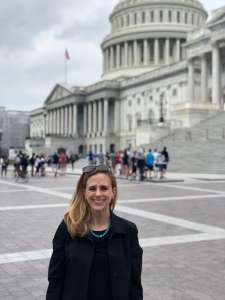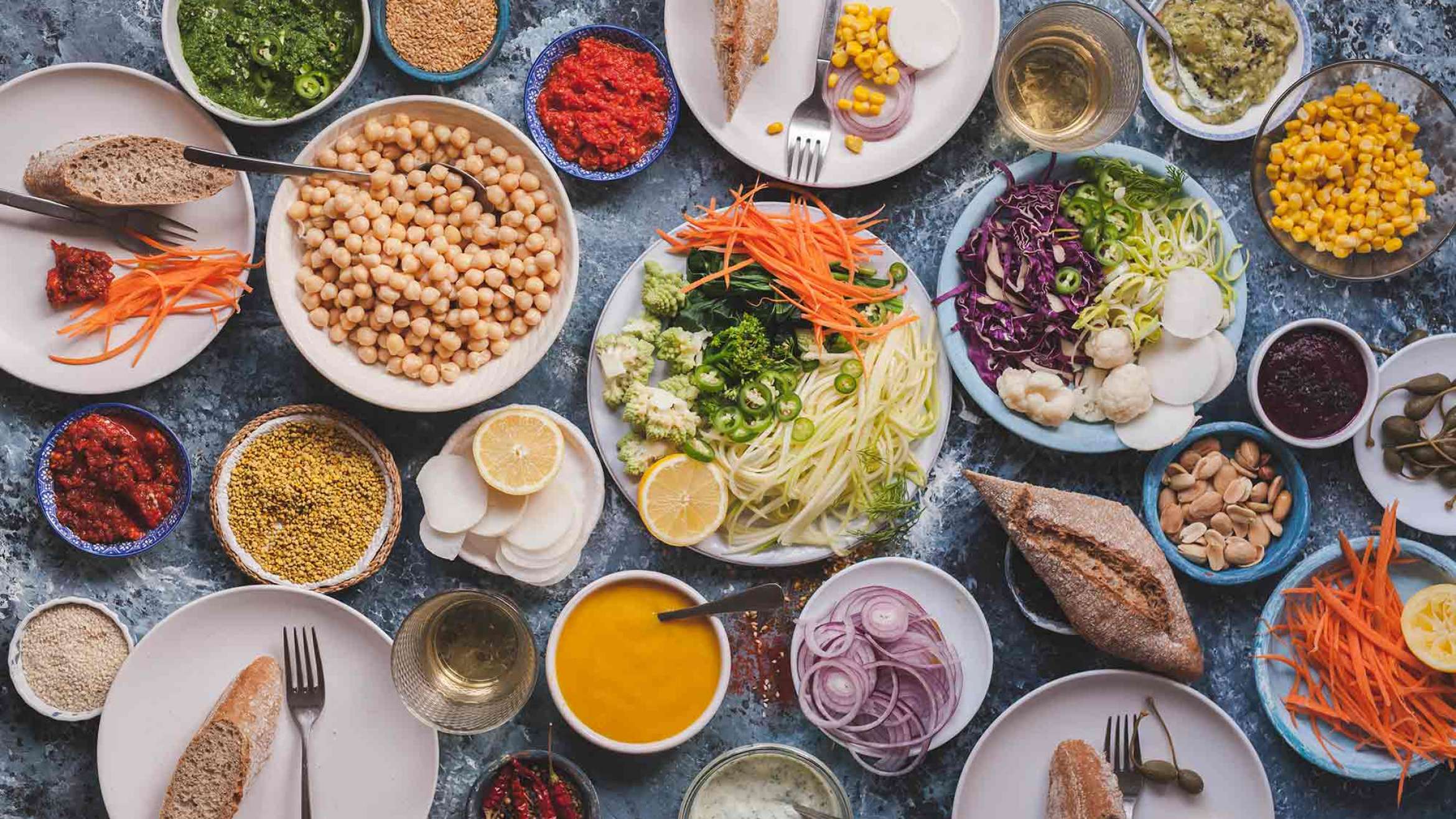Erin Malawer had dedicated her life to creating a greater awareness of what food allergens are — and are not — and advocating for those living with food allergies.
When Erin Malawer first had her son, now a teenager, she had no idea that food allergens were about to take over her life. Before long, her healthy baby boy was covered in eczema and having severe asthma attacks. By the time he was 15 months old, they had figured out what was going on: He had severe allergies to peanuts, sesame seeds, dairy, eggs, soy, wheat and corn. allergens
“My head was spinning when I got off the phone with the doctor, whose only advice at the time was to get a prescription for epinephrine. I didn’t grow up with food allergies and didn’t really know much about them — I did know that I didn’t know enough to be able to trust my own knowledge,” she said. She added, “I began grieving all those childhood rites of passage he would have to miss, like going to the ice cream parlor or out for pizza after a soccer game. I didn’t want him to feel different or ostracized. I wanted him to feel included and important.”
“I began grieving all those childhood rites of passage he would have to miss, like going to the ice cream parlor or out for pizza after a soccer game. I didn’t want him to feel different or ostracized. I wanted him to feel included and important.”
She quickly decided she had to learn more, dedicating herself not only to finding a way of living that works for her family, but also to share what she’s learned to help simplify life for the 32 million Americans living with food allergies, and those who care for them.
 Now she is the executive director of AllergyStrong, where she advocates for at-risk and underserved communities dealing with food allergies. She also publishes Allergy Shmallergy to further spread the word, and has contributed to mainstream media programs on CBS Radio, Politico, Bloomberg, Healthline, WebMD, and CBS News, as well as writing a food allergy column for Allergy & Asthma Today. She also was featured in the Discovery Chanel documentary, “Emerging Epidemic: Food Allergies in America,” and helped produce the Emmy award-winning “Spell It Out” PSA – The ABCs Of Food Allergies,” which enlisted real children with food allergies, along with Disney and Nickelodeon stars who had connections with food allergies, to dispel myths and dispense the facts.
Now she is the executive director of AllergyStrong, where she advocates for at-risk and underserved communities dealing with food allergies. She also publishes Allergy Shmallergy to further spread the word, and has contributed to mainstream media programs on CBS Radio, Politico, Bloomberg, Healthline, WebMD, and CBS News, as well as writing a food allergy column for Allergy & Asthma Today. She also was featured in the Discovery Chanel documentary, “Emerging Epidemic: Food Allergies in America,” and helped produce the Emmy award-winning “Spell It Out” PSA – The ABCs Of Food Allergies,” which enlisted real children with food allergies, along with Disney and Nickelodeon stars who had connections with food allergies, to dispel myths and dispense the facts.
Unblurring the Lines
There are a lot of misconceptions around food allergies, such as the difference between a food allergy and a food intolerance, she said. “A food allergy is an immune system response to a food protein. When the body senses that protein, it thinks of it as a foreign invader like an infection or a virus, and it begins to attack it. This can lead to anything from a mild reaction to anaphylaxis, which can lead to death.”
A food intolerance is when the body can’t digest certain enzymes, which can lead to digestive issues including vomiting and diarrhea. A third food-related condition, she said, is celiac disease, an autoimmune disease where the body lacks the enzyme it needs to break down gluten. This can lead to long-term problems.
Anyone who is planning an event — whether it’s a child’s birthday party or a conference for adults — needs to understand the difference between food allergies, food intolerances, and food-related diseases such as celiac. They also need to know that there’s no such thing as a mild food allergy. While a reaction may be mild one time, it could turn into life-threatening anaphylaxis the next time. “It’s important to treat every food allergy as a life or death situation,” Erin emphasized.
Another thing many people don’t understand is that allergens can be hidden in things other than food and beverages, Erin explained. Allergens can be in everything from lip balm to shampoo to toothpaste to laundry detergent. “If I use lip balm that has palm oil in it and I kiss my son, that can cause a reaction,” she said. “We have to check everything.”
Event managers need to ensure that those with food allergies to not have to live in fear of the world around them or that they are made to feel like they are “different” because they have food allergies.
And, she added, it’s essential to bring empathy and understanding, and make it possible for that person to fully and safely participate in the event. Event managers need to ensure that those with food allergies to not have to live in fear of the world around them or that they are made to feel like they are “different” because they have food allergies.
That’s what food and beverage inclusion means, she said.
The High Cost of Food Allergies
Managing food allergies comes with a price tag of almost $25 billion a year, according to a 2013 study by Ruchi Gupta, MD, most of which is shouldered by families. “That’s a lot of money, especially for families that live paycheck to paycheck,” Erin said. It may be worth talking with a tax accountant to see if you can take special foods expenses as a tax write-off because they are a medically necessary expense.
“If you don’t live with a food allergy, you may not understand the time and money that goes into maintaining the lifestyle you need to survive safely,” said Erin.
 This means reading each and every label, and looking at what’s behind the label sometimes, because potential allergens can be hidden inside catch-all phrases such as “spices” or “natural flavorings.” Erin said she sometimes has to call the manufacturer to ensure that, for example, sesame isn’t included. As you can imagine, this can take a lot of time.
This means reading each and every label, and looking at what’s behind the label sometimes, because potential allergens can be hidden inside catch-all phrases such as “spices” or “natural flavorings.” Erin said she sometimes has to call the manufacturer to ensure that, for example, sesame isn’t included. As you can imagine, this can take a lot of time.
The top eight allergens are:
- Dairy
- Eggs
- Tree nuts (almonds, Brazil nuts, walnuts, etc.)
- Peanuts
- Shellfish
- Wheat
- Soy
- Fish
While these common allergens, which account for 90% of allergic reactions, now need to be included in labels in the U.S. by their common names, allergens outside of the top eight — there are 170 total documented foods that can cause allergic reactions — are not subject to the same labeling rules, she said.
Because, even with the best of intentions, those who aren’t living with food allergies may not understand this, to ensure her son’s safety at events, she also has to make equivalencies, such as bringing her own cake to a birthday party or a safe snack to soccer practice.
Medication also can be a major expense. For example, epinephrine injectors, which used to cost between $10 and $50, now can ring up to $600 per set, and most people need multiple sets so they have one at work or school, at home, and anywhere else the person with the food allergies spends a lot of time. And, since it’s only good for a year, the set often has to be discarded unused. And then there’s the costs of testing and seeing allergy specialists, which also can add up.
For parents or caregivers of people with food allergies, there also can be hidden costs in not being able to take jobs that entail too much travel or lack the flexibility that person needs to be able to be there when needed.
Best Practices
Erin suggested these best practices for keeping those with food allergies safe:
- Have epinephrine on hand. Life-threatening reactions can happen in a matter of seconds.
- Come prepared. This could mean bringing your own hamburger bun to a restaurant, or a cupcake to a birthday party.
- For event managers and those who provide food and beverage to the public: Have someone on staff who understands food allergies and is knowledgeable about what is being served — and able to make safe substitutions. “The wait staff may not really understand, but someone should.”
One in every 10 adults has a food allergy, but that number may in fact be much higher, because many people who have a reaction may just avoid that food and never get a formal diagnosis, Erin said.
Erin said she knows there is a lot to understand — she’s still learning new facts around the topic daily. But it’s vital that everyone gain at least a basic understanding of the facts about food allergies to ensure that those who have to live with these allergies are kept safe and made to feel included in all aspects of life — including meetings.
Find Erin: Website | Facebook | Twitter | Instagram
LISTEN to the interview with Erin to learn more and hear directly from her on the Eating at a Meeting Podcast:



